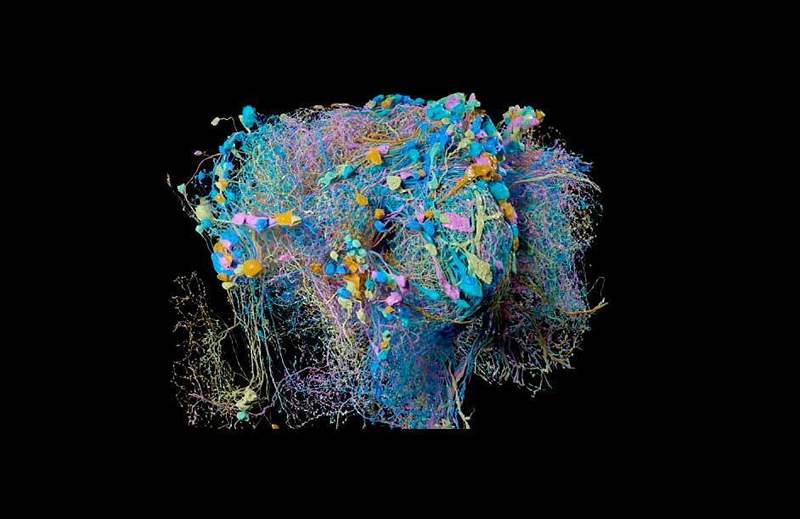Astendosis the inability to recognize objects with touch

- 1869
- 467
- Lorenzo West I
Is it possible to live without the sense of touch? Most of us give the ability to see, listen and touch for granted. However, there are people who present difficulties to use their senses in the way we usually do it. In the case of Patients with astendosis, the sense of touch becomes confusing and not very useful.
As with the rest of agnosias, brain capacity to integrate sensory information is altered. Next, in this article, we will see how a person who suffers from this condition works and what are the causes.
Content
Toggle- What is astendosis and what are its symptoms?
- Causes
- How is asteognosis detected?
- Treatment
- References
What is astendosis and what are its symptoms?
When we talk about agnosias, we refer to a group of neurological alterations that affect the integration of sensory information. One of the most popular examples is Prosopagnosia or the inability to recognize faces. Someone who suffers from this alteration is capable of distinguishing eyes, mouth, eyebrows, nose, etc. However, your brain has trouble integrating the face as a whole and recognizing who it is.
In the case of astendosis, the difficulty is located in the sense of touch. A person who suffers from it You cannot process the touch information normally. Therefore, I would have trouble recognizing objects with just touching them. It is important to emphasize that alteration is only limited to the sense of touch. So, The patient could recognize the object if he sees it, but if he depended only on his touch, he would not be able to do it.
Imagine that you have a bandage on your eyes and place a fork on your hand. You can likely know what the metal is, tell the skewers and feel the shape you have. But, patients living with this alteration would only distinguish the elements, without being able to integrate the form. For example, they could say "it's metal, it has skewers, it's elongated, it has a handle". Even so, they could not conclude that it is a fork.
So, we are facing a failure in the integration of sensory information that comes from touch. The skin organ sends nerve signals, but the brain has difficulty processing and making sense.
Causes
Astereognosis is linked to different alterations, injuries and diseases that directly affect the brain. In an article by Unnithan and Emmady (2020), they point out that The alteration is associated with injuries in the contralateral region of the parietal lobe. They explain that small central post lesions can cause this inability.
Following this line, lor more common is that the difficulty occurs with one of the hands. However, there are cases where the problem is manifested bilaterally. Those paintings occur when there is dominance in the left hemisphere and there is an injury in the left central region.
Traumas associated with accidents such as cranial fractures that affect the parietal lobe can also produce the condition. Other frequent causes are strokes, malignant tumors and neurodegenerative diseases such as Alzheimer's. On the other hand, arteriovenous malformations can cause astendosis in some cases.
 3D brain map: the never seen
3D brain map: the never seen How is asteognosis detected?
In general, the disease occurs after experiencing some organic trauma, injury or disorder that affects the brain. Thus, Doctors usually warn it after stabilizing the patient and perform physical checks. In that situation, a simple test could be done where the person is asked to identify objects using only touch. You are asked to close your eyes and place different things in your hand such as pen, keys, combs, etc.
In addition, the specialist could request the realization of other special exams to identify the causative lesion. In most cases, computerized tomographs and functional magnetic resonances are performed. The objective of these evaluations is to determine where the brain injury is located or if there are tumors present.
Notably The diagnosis of this alteration is done only when there is no major somatosensory syndrome. That is, when there is no other problem that generally affects the sensory organs and perception.
Treatment
Till the date, There is no specific treatment that completely cures the symptoms of astendosis. When this pathology is diagnosed, the cause is first identified and then an intervention is selected to address it.
For example, in the case of strokes, treatment may include thrombolysis, thrombectomy and anticoagulant drugs. Now, if it is tumors, surgery is needed to extract it, chemotherapy or radiotherapy.
The cognitive rehabilitation therapy can also be useful In cases where there are tumors, spills, brain traumas and dementia. Also, sensory training is an alternative that demonstrates significant improvement in clinical studies.
To conclude, it is necessary to also take into account the severity of the case. When there are minor injuries, the aforementioned treatments can produce significant improvement and reduce symptoms almost until they disappear them. However, if it is serious injuries, although there may be functional improvement, it is unlikely to be completely cured.
Stereognosis: recognize objects with touch
References
- Unnithan, a. K. TO., & Emmady, P. D. (2020).

